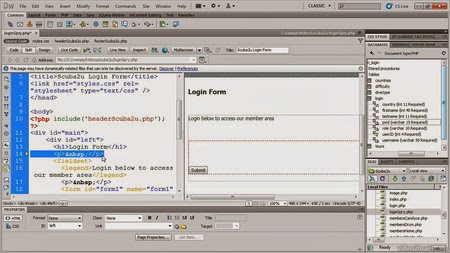An important but little-understood concept in dynamic web development is that of role-based logins. This allows different types of users to access different parts of the site; for example, basic users can access customer areas of the site, while administrators can access administrative areas. In this course from Adobe Certified Expert Candyce Mairs, you will learn to use Dreamweaver as features to create role-based logins, restrict page access, build an administrator area, and test everything to make sure it works. You will also see how to set up a development environment and work with a database from within Dreamweaver. Along the way you will build your skills in areas like working with PHP, adding form validation, using server behaviors, and much more.
Rapidgator.net
Table of content
Introduction
- Course Overview
- The Course Environment
- The Dynamic Website Environment
- Static vs. Dynamic Requests
- Install XAMPP on a Windows System
- Install MAMP on a Mac System
- Using Admin Consoles
- Installing the Course Files
Introducing Dreamweaver
- Overview of the Dreamweaver Interface
- Setting Up the Course Site
- Previewing Pages
Working in PHP
- Creating PHP Pages
- Adding PHP Coding
- Displaying Variables
- Commenting Your Code
- Working with Includes
- Building the Course Templates
Databases
- What Is a Database?
- Adding Database Tables
- Connecting to the Database
- Getting Data from a Database, Part 1
- Getting Data from a Database, Part 2
Building the Login Area
- Planning the Login Process
- Creating a Login Form
- Adding Form Validation, Part 1
- Adding Form Validation, Part 2
- Exploring the Registration Page
- Correcting Table Fields
- Setting Up the Login Landing Page
- Using Server Behaviors
- Inserting New Members
- User Authentication
- Restricting Access to Pages
- Testing the Login
Building the Admin Area
- Admin Area Overview
- Adding New Users
- Restricting Access
- Planning the Admin Update Area
- Building the Members Table Listing
- Building the Querystring
- Populating the Update Form
- Updating the Database Data
- Testing the Admin Update Process







No comments:
Post a Comment